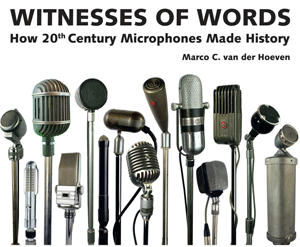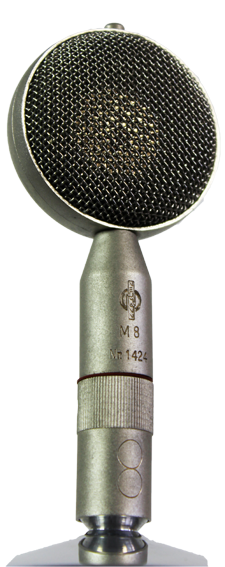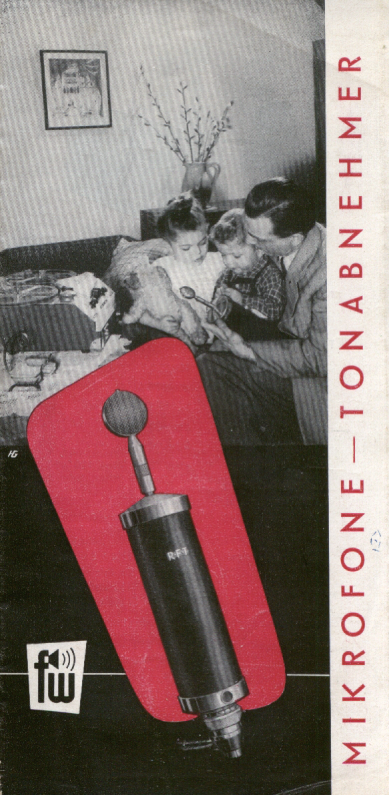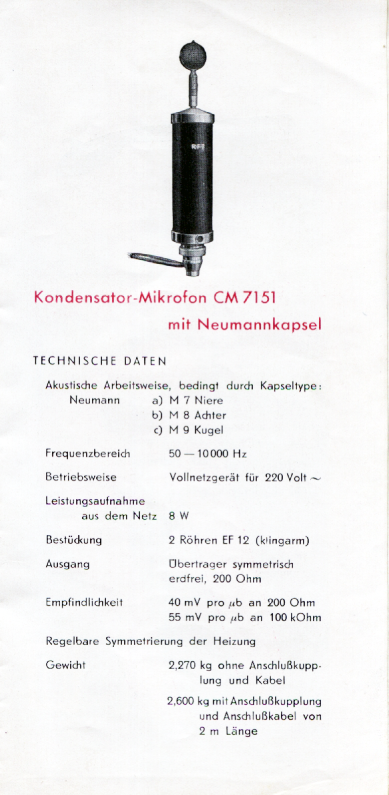|
The pre-war Körting, built transmitting equipment from Telefunken and Lorenz under license, for the German Luftwaffe, from 1935, and at that time had 3000 employees. In the GDR it was renamed RFT (Radio und Fernmeld Technik / Radio and Tele communications Technique) Leipzig. Funkwerk Leipzig was the business unit for microphones.
The RFT CM7151, production 1953-1958, is perhaps the largest condenser microphone with the classic bottle shape. The bottle is 330 x 92 mm, the same size as a complete Neumann CMV3, with head.
The sheer size of the CM7151 is a result of its design, which also places the mains power supply inside the housing, whereas other condenser models have it externally. The two EF12K tubes provide a high output, allowing it to be connected directly to an amplifier.
The microphone was never intended for studio work, its socialist job was sound amplification: PA.
I myself always had the idea that this type could not match the Neumann designs, but when I spoke extensively last year, in Gefell, with Jochem Kühnast, who had worked for Neumann all his life, he told me that the design came from Neumann. The intention was to start a second production line in Leipzig, but it turned out to be impossible to make microphone capsules there. The polluted industrial air caused too much pollution when a thin gold layer was deposited on the PVC membranes. That's why all the capsules were eventually made in Gefell, where clean forest air allowed the process to work perfectly.
According to Kühnast, the CM7151, which notoriously hums due to the internal power supply, was easy to get hum-free with the right adjustment. Unfortunately, even the most skilled technicians can't accomplish that, so only an external power supply makes it possible to use these microphones in the studio.
East German production was invariably plagued by lack of materials, which led to many different parts to be found in CM7151s. Some sound great, most don't, those benefit from replacing the resistors and capacitors.
The amp bottle accepts the three different bayonet locking capsules designed for the Neumann CMV 3A: M7 Cardioide, M8 Figure of Eight and M9 Omni.
The omni capsule (= Neumann MZ026) of the earlier CM7049, with the same 'Torpedokopf'(Torpedo head) as the CMV3, also fitted the CM7151 via an adapter.
The connector of the CM7151 and the CMV3 are exactly the same, but to avoid mistakes, the thread of the mounting ring of the CM7151 has been reduced by one millimeter.
I acquired my CM7151 without a capsule, but was very fortunate to receive an M8 donated by another microphone collector, for which I am immensely grateful. So now I can make the microphone heard.
Although the factory specified a range of 50-10,000 Hz, my copy has a range of 40-16,000 Hz, equal to the Neumann U47 and U48.
It is only logical that these great mics can be found in many studios and are used a lot there, just like their West German cousins.
Many more types feature in my book Witnesses of Words. More information about that can be found at www.witnessesofwords.com

|
|
|
| |
 |
Top: the huge CM 7151
Middle: back and M8 capsule
Bottom: sound, innards and leaflets from 1955
|
|
|
|
 |
 |
|


 Video's
Video's Contact
Contact








